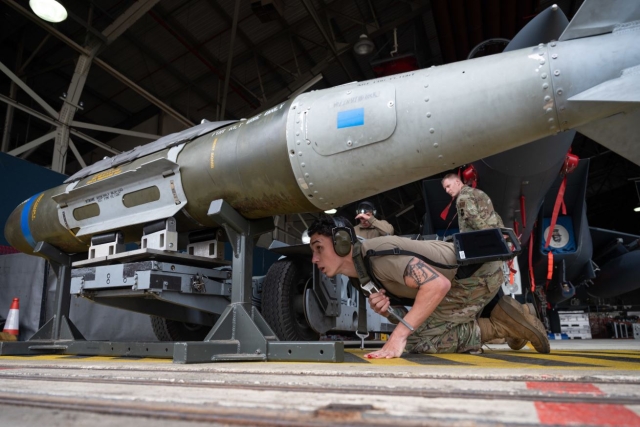New Russian D-30SN Glide Munition Better than GBU-39 Small Diameter Bomb?
UIGM-equipped D30SN offers greater range, enhanced stealth, and versatile launch options compared to the GBU-39.

Russia has begun deploying its latest munition, the D30SN glide bomb, in Ukraine, featuring an additional engine that enhances its glide range beyond comparable weapons.
The first clear footage of the D30SN’s deployment by the Russian Aerospace Forces appeared online recently. This new Universal Interspecific Glide Munition (UIGM) has an additional engine that provides a greater range compared to aerial bombs with the Universal Planning and Correction Module (UMPC). Since March, the D30SN has reportedly been used against Ukrainian targets, with images of its release from a Su-34 bomber circulating in Russian media.
The D30SN, with a 300 mm caliber, can be launched from ground-based Multiple Launch Rocket Systems (MLRS) like the “Smerch” and “Tornado-S”. This compatibility allows the D30SN to function as the gliding combat stage for 9M528 and 9M542 missiles, achieving a height of 20 km and a range of 200 km.
Deployed in the Kharkiv region, the D30SN exhibits better aerodynamic performance compared to aerial bombs with UMPC. Despite its 250 kg warhead, it is used against infrastructure targets such as railways, command headquarters, and warehouses.
The D30SN, when released from a Su-34 at altitudes over 12 km, can achieve a range of up to 120 km, comparable to the American GBU-39/B Small Diameter Bomb (SDB). In contrast, bombs with UMPC have a range of 45-65 km. The enhanced range is facilitated by the D30SN's jet engine. Furthermore, the absence of rectangular metal wings reduces its radar cross-section to approximately 0.05 sq. m, making it significantly less detectable than UMPC bombs, which have a radar cross-section of 0.3 sq. m. This reduced detectability lowers the likelihood of detection by Ukrainian air defense systems by 2-2.5 times. The D30SN employs a guidance system based on an inertial navigation unit combined with GLONASS/GPS receivers, ensuring high noise immunity.

This development coincides with reports that Ukrainian fighter aircraft are being modified to carry the GBU-39 Small Diameter Bomb.
According to The Washington Post, the Ukrainian Air Force is already using GBU-39 bombs against Russian forces, with images showing these bombs fixed under aircraft wings. The American publication claims a 90% success rate for the GBU-39 when deployed from airplanes. These bombs, resistant to Russian electronic warfare, are difficult to detect and intercept due to their small size.
The GBU-39/B SDB, weighing 130 kilograms with a 190 mm diameter and 1.8 m length, can reach a maximum range of 110 km when dropped from high altitude. Its design includes wings that unfold during flight, enhancing its range, and a tungsten tip for penetrating concrete shelters. The bomb features an air detonation option and delayed detonation after impact, with accuracy ensured by an inertial system and GPS. The GBU-39 is also part of the Ground-Launched Small Diameter Bomb (GLSDB) munition, which combines the bomb with a rocket engine from the M26 missile, extending its range to 150-160 km.
Despite its effectiveness, Western media have reported that it is vulnerable to radio-electronic interference, causing occasional misses.










